As autumn arrives and temperatures drop, preparing your swimming pool for winter—known as winterizing—is crucial to protect it from cold weather, reduce maintenance costs, and ensure it’s ready for spring. The process varies slightly depending on your pool’s lining material: plaster, tile, fiberglass, or thick reinforced PVC membrane. Each lining has unique characteristics that affect winterizing steps, from cleaning to covering. This guide provides practical steps tailored to these main pool linings, enabling all pool owners to effectively safeguard their investment.
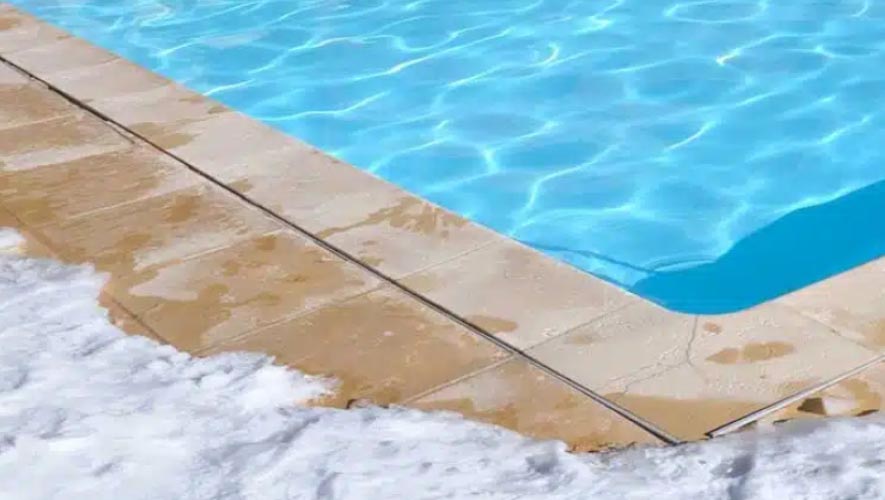
Why Winterizing Is Important
Winterizing prevents damage from freezing water, debris buildup, and chemical imbalances, which can harm the pool’s structure and lining. For instance, water expands by about 9% when frozen, risking cracks in plaster or tile, while improper chemicals can stain or degrade surfaces. Whether fully closing the pool or maintaining partial operation in milder climates, proper preparation extends the lifespan of linings like plaster (5–10 years), tile (10–15 years), fiberglass (15–25 years), or PVC membranes (20–30 years).
General Winterizing Steps for All Pools
Regardless of lining, these core steps apply to most in-ground and above-ground pools:
Step 1. Clean the Pool: Remove debris (leaves, dirt) with a skimmer net and vacuum. Brush walls and floor to prevent algae buildup, which can stain linings.
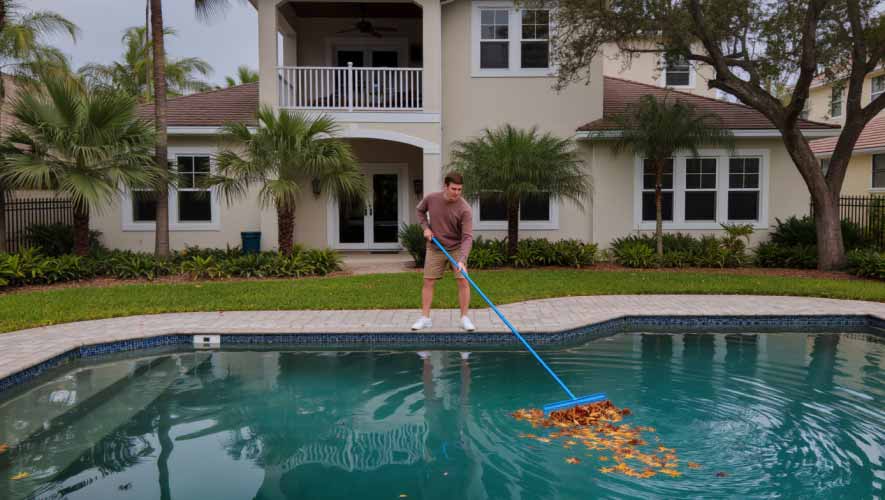
Step 2. Balance Water Chemistry: Adjust pH (7.2–7.6), alkalinity (80–120 ppm), and calcium hardness (200–400 ppm). Add a winterizing chemical kit (algaecide, shock) to prevent algae and bacteria growth during closure.
Step 3. Lower Water Level: In non-freezing climates, lower water 4–6 inches below the skimmer. In freezing climates, lower 12–18 inches below the skimmer for in-ground pools or below return jets for above-ground pools to prevent pipe damage.
Step 4. Drain and Winterize Equipment: Drain pumps, filters, and heaters; remove ladders and diving boards. Blow out plumbing lines with a shop vac or compressor and add non-toxic antifreeze to prevent freezing.
Step 5. Cover the Pool: Use a sturdy winter cover secured with weights or straps to protect against debris, UV rays, and ice.
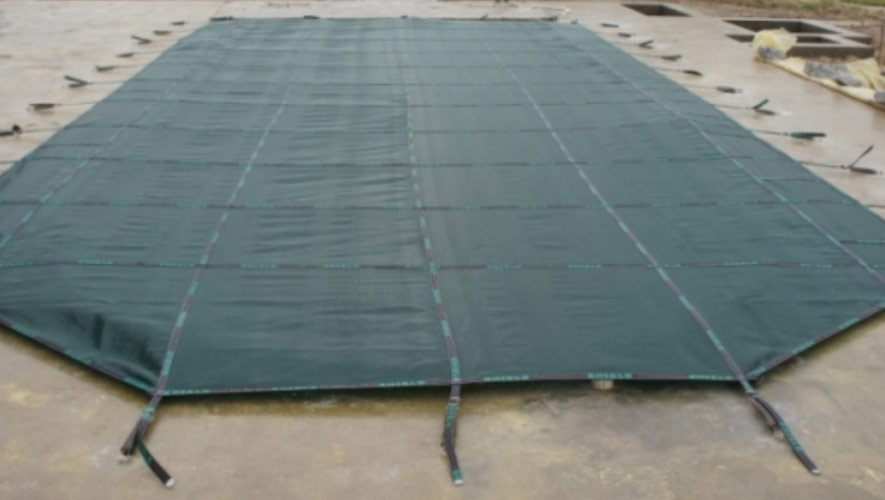
Winterizing by Pool Lining Type
Each pool lining requires specific care to maintain its integrity during winter, as freezing temperatures, debris, and water chemistry affect them differently.
Plaster Pools
- Characteristics: Plaster is a porous, cement-based finish prone to staining, algae growth, and cracking if water freezes against it.
- Winterizing Tips:
- Deep Clean: Brush thoroughly to remove algae, as plaster’s porosity traps organic matter. Acid wash if stains are present (professional cost: $500–$1,000).
- Chemical Balance: Maintain calcium hardness (250–400 ppm) to prevent etching. Add extra algaecide, as plaster is algae-prone.
- Cover Securely: Use a solid cover to block sunlight, which fuels algae growth in porous plaster. Ensure no standing water pools on the cover, as leaks can cause staining.
- Freeze Protection: In freezing climates, lower water well below the skimmer (18 inches) to prevent ice expansion cracking plaster, costing $5,000–$10,000 to resurface.
Why It Matters: Plaster’s short lifespan (5–10 years) and vulnerability to damage make thorough winterizing critical to avoid costly repairs.
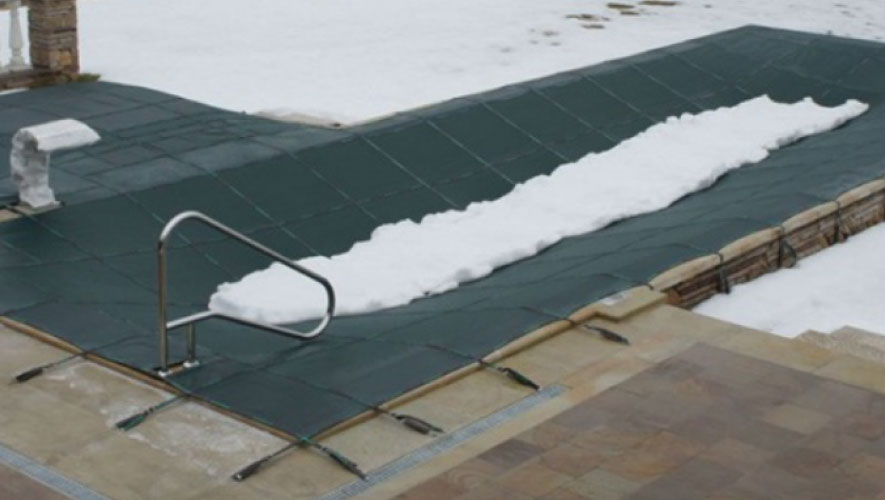
Tile Pools
- Characteristics: Ceramic or glass tile is durable and non-porous, but grout lines can crack during freeze-thaw cycles or stain from debris.
- Winterizing Tips:
- Inspect Grout: Check for cracks before winter; reseal if needed (professional cost: $1,000–$3,000). Clean tiles with a mild acid solution to remove stains.
- Chemical Balance: Keep pH slightly higher (7.4–7.6) to protect grout from acidic water. Add algaecide, though tile resists algae better than plaster.
- Secure Cover: Use a solid cover to prevent debris from staining grout. In cold climates, ensure water is low (12–18 inches below skimmer) to avoid ice pressure on tiles.
- Pipe Protection: Blow out pipes thoroughly, as cracked tiles from frozen pipes cost $2,000–$5,000 to repair.
Why It Matters: Tile’s longevity (10–15 years) relies on protecting grout and preventing freeze damage to maintain its premium look.
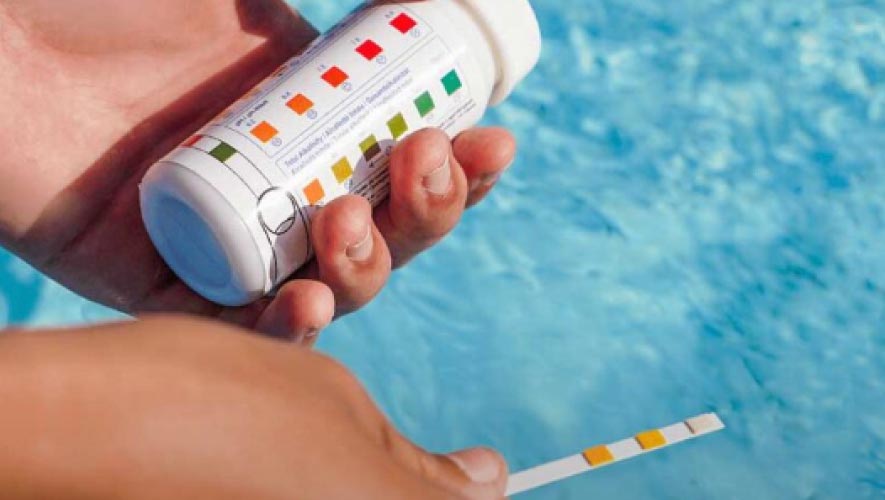
Fiberglass Pools
- Characteristics: Fiberglass pools have a smooth, non-porous gelcoat surface, resistant to algae and stains but sensitive to scratches and UV damage if uncovered.
- Winterizing Tips:
- Gentle Cleaning: Use a soft brush to avoid scratching the gelcoat. Avoid abrasive cleaners that can damage the finish.
- Chemical Balance: Maintain standard pH levels (7.2–7.6) with minimal algaecide, as fiberglass resists algae. Avoid scaling with light shocking.
- Cover Protection: Use a UV-resistant solid cover to protect the gelcoat from sun damage, which can cause fading or chalking (repair cost: $1,500–$4,000).
- Freeze Caution: Lower water below jets in cold climates, as fiberglass can crack under ice pressure, though less prone than plaster.
Why It Matters: Fiberglass’s durability (15–25 years) is preserved by protecting the gelcoat and preventing structural stress from freezing.
Thick Reinforced PVC Membrane Pools
- Characteristics: PVC membranes (e.g., Cefil 60 mil pool liner) are non-porous, flexible liners reinforced with polyester mesh, highly resistant to algae, stains, and UV damage, making them low-maintenance.
- Winterizing Tips:
- Minimal Cleaning: Brush lightly; the non-porous surface resists algae, reducing cleaning time. Spot-clean stains with mild cleaners.
- Chemical Balance: Use standard winterizing chemicals; PVC’s stain resistance requires 15–20% less algaecide than plaster, saving $50–$100/year.
- Cover Choice: A mesh cover works well, as PVC membranes resists UV and debris staining.
- Freeze Tolerance: If necessary, reduce the amount of water; flexible PVC membranes respond well to ice expansion, unlike rigid linings, virtually eliminating the risk of cracking.
Why It Matters: PVC membranes’ long lifespan (20–30 years) and ease of maintenance simplify winterizing, while proper covering extends durability.
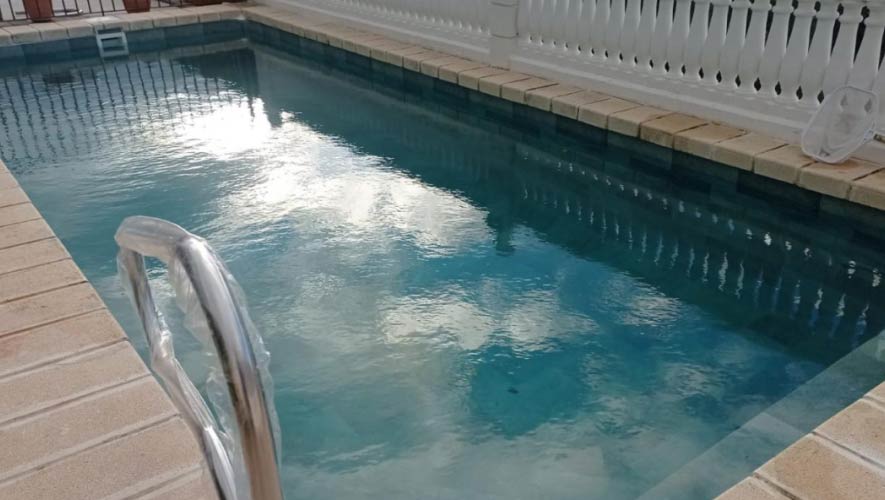
Additional Tips for All Pool Owners
Winterize Early: Begin in early autumn (September–October) to avoid sudden freezes, especially for plaster and tile pools, which are more vulnerable to cold.
Check Equipment: Store removable parts indoors to prevent cracking. Use a high-quality winterizing kit suited to your lining type.
Monitor During Winter: Check the cover monthly for tears or pooling water, which can damage linings like plaster or tile. Remove debris to prevent staining.
Professional Help: For complex tasks (e.g., acid washing plaster, resealing tile grout), consult professionals to ensure proper care.
Have Questions?
Talk to our specialist! Just fill out the form, and we’ll give you a call!
Conclusion
Winterizing your pool protects its lining and systems, ensuring a smooth spring opening. Plaster pools require thorough cleaning and chemical balancing due to porosity, while tile pools need grout protection. Fiberglass pools demand careful gelcoat maintenance, and thick reinforced PVC membrane pools offer the easiest upkeep due to their non-porous, flexible nature. By tailoring winterizing steps to your pool’s lining—plaster, tile, fiberglass, or PVC—you can prevent damage, save on repairs, and enjoy a pristine pool when warm weather returns. For expert advice on PVC membrane pools, contact SAKKO POOL specialists.
